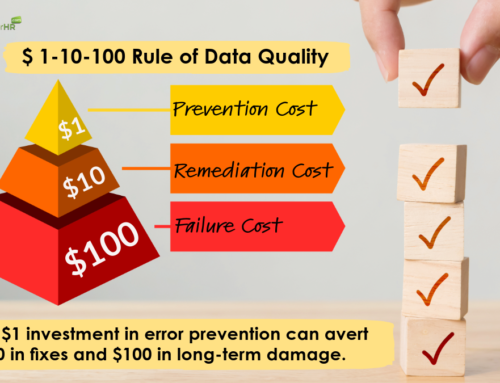Your company is as good as the people it keeps, and the responsibility to bring good people is primarily given to your Recruitment and HR Team. Hiring best-fit candidates in the stipulated timeline have always been a difficult task for many Organizations. This is important for any talent acquisition leader to keep track of these recruiting metrics to be aware of the situation and take action to improve the overall recruitment processes.
Average Cost per Hire
This KPI measures the money spent by your recruitment team for hiring a talent. The objective is to see which source of hire is more cost-effective without compromising on the quality of hire. Cost per hire is one of the ways to check how effectively your recruitment budget is being utilized. You may realize that your team is spending more amount on external agencies, but most of your qualified candidates may come through employee referrals or from Social Media for many roles.
Average Cost per Hire = (Total External Recruiting expenses + Total Internal Recruiting expenses) / Total Number of Hires
External costs are the cost spent in hiring external agencies, posting an advertisement on job portals, News Paper, LinkedIn, Social Media, Job fair and campus Recruiting costs, background verification and drug tests
Internal costs usually include all internal spending for recruitment agents (usually excludes management costs however some companies do include this as well), fixed assets such as laptop/desktop/phone costs by agents, Referral amount given for employee referrals etc.
Note: Cost per hire is a short-term investment and before taking any decision based on this KPI, don’t forget to check the quality of hire metrics from different hiring sources.
Average Time to Fill
This metric gives us the number of days taken since the date final approval of the position received until an offer being accepted by the candidate (Don’t confuse with the date of joining). This allows you to check how fast or slow your team moves with the CV shortlisting, interview workflow etc. to provide final offer letter to a suitable candidate. We usually have little control over notice period, however, this is the area if improved, candidates can be on-boarded faster.
Average Time to Hire
This KPI gives us the average number of days between the first interaction with the best suitable candidate and the formal offer acceptance by the candidate. This helps us understand how soon your organization makes decisions to give offer post a right candidate enters into the pipeline.
For example, if your position was open on March, 1st of the year and Recruiter manager to give you the best candidate by 15th. Post all the interview, negotiation candidate accepts the offer on 30th March same year. Your time to hire would be 30-15=15.
*n=total number of offers accepted
Early Exit Rates (<= 90 days)
This KPI allows the leaders to understand wrong hiring (Culture or role misfit). In many organizations, voluntary turnover within 90 days are considered under recruitment/HR and does not go against business. You can also compare the results with tenured attrition to check the quality of hires.
YTD Attrition Rate (%) = (Total Employees exited within 90 days during n month/ Average headcount of employees with tenure bucket of 90 days)
Annualized Attrition Rate (%) = (Total Employees exited within 90 days/ Average headcount of employees with tenure bucket of 90 days) *(12/number of months)
Recruiting Channel Effectiveness
Recruitment team uses all effort to find suitable candidates through various sourcing channel. However, it is important to keep track to understand which sourcing channel is more effective for the specific role, level and Industry type. For example, If you are looking for entry level profile then probably LinkedIn is not the right option for you. Sometimes local job sites are more popular in a country than an internationally known name. This not only benefits the organization in getting candidates on time but also gives the option to choose best from the pool of available candidates.
This KPI can be easily calculated based on % of offer success at each major recruiting channels.
Satisfaction Rate (New Hire / Manager)
I highly recommend this KPI to all the leaders, since it gives a clear view of the satisfaction for both candidate and Manager. Does new hire fit well into the culture and work of your organization as desired? Did you as a manager provided enough support to the candidate to get established into the role? If the survey outcome is not as desired then you may work on candidate’s expectation, bringing more clarity to the job description, culture transformation, dedicated training plan etc.
All such information can be gathered through the survey conducted by HR Analytics Team. Refer to the article “Redefine Your Employee Survey for better HR Analytics” to know more on this subject.
Diverse Hiring Rate
Onboarding Diverse candidate is one of the essential topics in any of HRLT discussion today, right? This is one of the key metrics you must be watchful for to ensure there are no inherent biases in the entire process.
Have you ever thought, what if your talent acquisition team members are not sharing the diverse profiles with interviewer based on certain biases or assumptions? Is not this really critical for your organization to provide equal opportunity to not only existing but to those diverse candidates who are applying from outside?
The following two KPIs are usually helpful in measuring such cases:
1. What % of diverse candidates were sent for the interview? and;
2. What % of diverse candidates were hired?
The intention should not be to force hire diverse candidates but to ensure there are no biases in the process and you are at-par with industry benchmark and also giving the right message to the community and statutory bodies.
This brings me to the end of this topic and I hope this may have given you some idea on top Recruiting metrics being used by talent acquisition leaders.
I will look forward to your opinion on this blog.









Mr Pandey very informative and request you to give your no. As you must have changed your no.and need to discuss about HR analytics in detail. Hope you remember me .
Anuj Budhiraja
Thanks Anuj! See your mailbox for my number :)
Very good article Prabhakar, I liked your time to hire calculation logic, thought the organisations are often confuse about this KPI measurment specially when to start and end the clock.
Thanks Amit for going through the details of the formula. You rightly pointed out, even I have seen inconsistencies with some of these KPI definitions. I hope this helps bring some consistency and avoid confusion.
Thanks for sharing this valuable information with us. It is really great and helpful article!